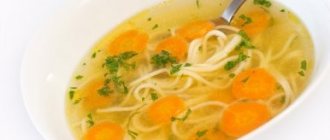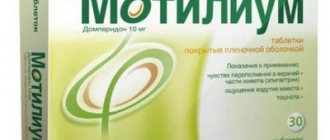Any form of damage to the gastric mucosa is an indication for following a diet in combination with drug therapy. Patients are often advised to eat boiled, steamed, or baked vegetables. One of the leaders is zucchini for gastritis, due to its rich vitamin and mineral composition, easy digestion, and low calorie content.
Plant foods should be in every person's diet. In the absence of fruits and vegetables in the diet, the likelihood of diseases of the digestive system, as well as decreased immunity, increases. However, if the pathology has already made itself felt, then the first aid will be a therapeutic diet. Zucchini will be of particular benefit to humans for gastritis and other inflammations in the gastrointestinal tract.
Pathological disorders in the functioning of the digestive tract can be cured using a set of measures. Therapy is aimed at restoring damaged mucous membranes, as well as increasing the level of vitamins and minerals in the body. Vegetable dishes cope with this task in the best possible way without damaging the walls of the stomach and intestines.
Zucchini for health
The tender fruit is rich in dietary fiber and low in calories - only 24 kcal. It has an adsorbent effect, collecting toxins, waste and undigested food. Decomposition products, thanks to zucchini fiber, are easily eliminated from the body. A special feature of this vegetable is the absence of symptoms of flatulence, constipation and diarrhea after eating zucchini dishes.
The mineral composition of the fruit replenishes the body with trace elements (calcium, potassium, iron, magnesium), as well as vitamins (C, A, PP, H, B1, B2, B3, B6, B9). Thanks to these components, the following changes occur:
- the condition of the skin improves, its elasticity and tone increase;
- collagen production increases;
- the heart rhythm is normalized, as well as the functioning of the liver and brain;
- muscle tissue is strengthened;
- The body's defenses increase.
The uniqueness of zucchini fruits is that, along with its high water content (95%), it, on the contrary, removes excess liquid from the body. Thus, this is an indispensable product for those losing weight in the fight against cellulite. In addition, it effectively cleanses and restores the liver in case of alcohol poisoning and abuse of fatty foods.
Zucchini contains natural antioxidants that prevent premature aging.
Simple and healthy recipes
It is possible to combine zucchini with lean meat.
The oblong, green fruits belong to the group of vegetables that can be used to prepare a wide variety of dishes in a variety of ways. It is important to cook zucchini for gastritis, observing the following rules:
- The size of the vegetable should not be large, about 25 cm.
- It is recommended to cook zucchini with the peel; it contains a large number of microelements.
- To improve the taste, you can additionally add various vegetables to your dishes.
- The low protein content in vegetables is compensated by the addition of meat or fish.
Boiled, stewed, baked zucchini does not harm the inflamed walls of the stomach during gastritis and retains all its beneficial properties.
Common dishes
Casseroles, souffles and puddings are considered useful and do not injure the inflamed mucous membrane during gastritis. But there are a considerable number of ways to prepare the fruit in a tasty and healthy way. The simplest recipe for a zucchini dish is puree soup. The base is zucchini, and for variety, parsley, potatoes and onions are added. It is recommended to use this recipe:
- The vegetables are first cut into cubes and sautéed in butter.
- Then they are filled with broth (water) and cooked until tender.
- The prepared vegetables are crushed in a blender, and the resulting mass is diluted with broth to a puree consistency and brought to a boil.
Hot spices should not be used to prepare this dish.
The second, no less tasty, dish is squash caviar. This is a favorite food of many, very useful for gastritis, provided that garlic was not used in preparation. Therefore, it is better to cook it at home rather than buy it in a store. The recipe is simple:
- The zucchini and carrots are finely chopped and lightly boiled in boiling water.
- To the boiled vegetables, add peeled tomatoes and herbs, salt and sugar to taste, and simmer everything together until fully cooked.
- The finished mass is rubbed through a sieve or whipped with a blender and brought to a boil again.
To prepare vegetable stew, not only zucchini is used; bell peppers, potatoes, carrots, and eggplants are added. All ingredients are cut into cubes and sautéed in butter until golden brown, then broth (water) is added and simmered until tender for about 30-40 minutes. At the end of cooking, add salt to taste, herbs and 1-2 tbsp. l. sour cream.
Pros and cons of the fetus with gastrointestinal diseases
Gastroenterologists consider zucchini a useful vegetable for pathologies of the gastrointestinal tract. The pulp of the fruit that has undergone heat treatment contains a small amount of fats and acids of organic origin. This has a beneficial effect on the parietal cells of the stomach and does not lead to disruption of the secretion of its secretions.
Dishes from zucchini for gastritis with high or low acidity are included in the therapeutic diet of patients. However, in its raw form, the fruit is strictly contraindicated for consumption, since the fibers of the fresh vegetable can harm the inflamed mucous membrane. Therefore, it is very important to prepare zucchini correctly, following the dietary recommendations of your doctor.
It is prohibited to introduce pickled or salted vegetables, including zucchini, into the diet of a patient with gastritis. Concentrated brine sharply increases secretory function, which leads to acute pain in the stomach.
With increased acidity
Young fruits have healing properties and do not irritate the gastric mucosa in hyperacid gastritis. Zucchini is not peeled during cooking, as it contains many vitamins.
In dietary nutrition, vegetables are cooked together in the form of a stew. It is stewed zucchini that is most beneficial for the gastrointestinal tract. It is worth considering that the fruits do not contain proteins, so they are combined in the diet with boiled dietary meat or fish.
For pathologies of the stomach, intestines and other organs of the digestive system, fried foods are contraindicated, especially zucchini in batter.
With low acidity
With weak secretory function of the stomach, solid food can harm the inflamed mucosa. In this case, nutrition is aimed at mechanically sparing the walls of the digestive organs. But at the same time, it must have a stimulating property for the production of gastric juice.
Eating zucchini for hypoacid gastritis is allowed in a ready-made dish. It is not recommended to use them raw or fried. Fruits can be boiled, baked and stewed. Vegetables processed in this way will retain all their beneficial properties.
For ulcers
At the time of exacerbation of diseases of the digestive system, a strict diet is observed. Only pureed, well-cooked foods (porridge, soups) are allowed. Vegetables are not recommended in the acute period, and the use of zucchini for stomach ulcers and atrophic gastritis, like other pumpkins, is completely prohibited. When restoring the digestive process, all coarse fibrous foods with a high fiber content are excluded.
Zucchini is healthy and quite harmless. However, in case of ulcerative pathology of the digestive tract, they should be included in the diet only during a period of stable remission.
Can people with gastritis eat?
If you have gastritis, it is strictly forbidden to eat raw zucchini.
It is allowed to eat vegetables after heat treatment.
When the question arises about whether people with stomach problems can eat zucchini, it is important to understand that we are mainly talking not about the vegetable, but about the method of preparing it. Quite a few people like to eat raw zucchini, but it should be noted that in such a situation it is only beneficial. The dense pulp injures the mucous membrane of the organ, causing attacks of pain. Which type of treatment is appropriate for consumption depends on the nature of the disease.
With high acidity
If the level of acid in the stomach is high, there are two cooking restrictions under which elongated vegetables cannot be consumed. These include:
- Raw zucchini. They contain essential oils that irritate the organ mucosa, which causes hydrochloric acid to be released more intensely.
- Fried vegetables. Fat and carcinogenic substances have a negative effect on the stomach, kidneys, liver, and intestines.
With low acidity
With gastritis, the gastric mucosa is inflamed, so any solid product can further damage the already inflamed walls. The intensity of symptoms increases, the feeling of discomfort becomes constant. Therefore, with low acidity, as well as with high acidity, you should not eat raw and fried vegetables.
Useful combinations
Zucchini is versatile in that it can be combined with many other vegetables. The most affordable combination of products is stewed caviar, which will improve the functioning of the gastrointestinal tract, relieve swelling, and remove uric acid salts (urates).
Zucchini goes well with the following foods:
- carrot;
- potato;
- eggplant;
- tomatoes;
- meat (poultry, beef);
- chicken eggs;
- hard cheese;
- parsley.
Before preparing zucchini stew, consult your doctor about the permitted combinations to avoid additional stress and irritation of the stomach walls.
How to cook zucchini
Proper preparation of zucchini during a gastrointestinal tract disease is considered an important point in a therapeutic diet. The fruits can be boiled (also steamed), stewed, baked (both in the oven and in a slow cooker), and made into soufflés and purees. However, gastroenterologists prohibit the consumption of fried zucchini by those people who have diseases of the gastrointestinal tract.
For dietary nutrition, choose ripe, young fruits up to 25 cm in length. At the same time, pay attention to the color of the fruit. It should be a soft green shade. In such vegetables, the skin is thin and soft, which is extremely important for stomach pathologies. It is a storehouse of vitamins and minerals!
Pumpkin fruits are very useful in the diet. They help normalize the functioning of the digestive tract. But with erosive manifestations of the disease, they are not recommended to be included in the diet, as they are rich in fiber.
Zucchini recipes
This delicate, tasty vegetable is a frequent guest on the summer table. It allows you to improve digestion, improve intestinal function and easily digest the lunch you eat. There are many options for preparing zucchini. Let's look at the most popular recipes.
Delicate caviar
A dish familiar from childhood is a vegetable puree made from zucchini, previously stewed with onions and carrots. It is often used as a vegetable supplement in medicinal diets for gastritis and duodenitis due to its delicate texture and mild taste. To do this you will need:
- zucchini - 2-3 pcs.;
- onion - 1 head;
- carrots - 1 pc.;
- water - 100 g;
- salt;
- sunflower oil.
Step-by-step preparation:
- Chop onions and carrots.
- Sauté them in sunflower oil over low heat until transparent.
- Cut the zucchini into cubes and add to the vegetables.
- Add salt and half a glass of water.
- Simmer the zucchini over low heat for 35-45 minutes.
- For variety, you can beat the finished mass in a blender.
Vegetable caviar is an affordable dish. It is allowed to be introduced into the diet of patients with gastritis, but subject to dosage.
Stewed zucchini
With low levels of hydrochloric acid and hypoacid gastritis, it is recommended to eat stewed vegetables. To do this, take:
- zucchini;
- eggplant;
- onion;
- carrot;
- Sweet pepper;
- celery;
- parsley;
- water;
- sunflower oil;
- salt.
Step-by-step preparation:
- Wash and cut the vegetables into cubes.
- Place them in a deep saucepan and cover with water.
- Salt the mixture, add 2 tablespoons of oil and bring to a boil.
- Simmer over low heat for about 45-55 minutes.
- At the end of cooking, add finely chopped parsley and turn off the stove.
- Let the dish sit for 10 minutes and serve.
If you have symptoms of gastritis, you should introduce new recipes into your diet very carefully. Food is prepared in a semi-liquid and puree state. The appearance of stomach pain after eating stew means that the dish is undesirable in the diet at the moment.
Casserole with tomatoes
Baked zucchini with tomatoes is a real gourmet dish! The delicate consistency is achieved with the help of sour cream sauce and cheese. To do this you will need:
- zucchini - 2 pcs.;
- tomato - 2-3 pcs.;
- sour cream 10% - 100 g;
- low-fat cheese - 100 g;
- salt.
Step-by-step preparation:
- Wash the vegetables and cut them into slices.
- Place the first layer of zucchini in a baking dish and season with salt.
- Cover the vegetable with tomato rings on top.
- Pour sour cream over the ingredients (you can add a quarter glass of water).
- Season the dish with grated low-fat cheese.
- Bake for 25 minutes in the oven at 200 degrees.
This recipe goes well with béchamel sauce. Try it, experiment with taste. But do not forget to follow your doctor’s recommendations regarding nutrition and diet.
Zucchini fritters
Regular pancakes can be made from zucchini. They also go well with potatoes. Therefore, when making pancake dough, try adding other permitted ingredients. The classic recipe includes the following products:
- zucchini - 2-3 pcs.;
- egg - 1 pc.;
- flour or semolina - 3 tbsp. l.;
- salt.
Step-by-step preparation:
- Grate the vegetable and add lightly salt.
- After five minutes, squeeze out the excess juice with your hands.
- Add an egg, flour or semolina, and a pinch of salt.
- Mix the mixture and spoon onto a baking sheet.
- Bake the pancakes in the oven for about 20 minutes.
- Serve with low-fat yogurt or sour cream.
In such a dish it is allowed to add boiled meat, disassembled into fibers. Makes a hearty dinner.
Baked cups
The festive dish is prepared from zucchini or eggplant. For people with gastritis, the first vegetable is allowed. Choose young fruits with soft skin, which will become the basis for the cups. You will need:
- zucchini - 3 pcs.;
- boiled meat - 150 g;
- low-fat sour cream - 100 g;
- a pinch of salt;
- cheese and parsley for decoration.
Step-by-step preparation:
- Wash the zucchini and cut them crosswise.
- The height of each piece should be approximately 5-6 centimeters.
- Scoop out the pulp with a teaspoon and replace it with ground boiled meat.
- Salt and fill the “cups” with sour cream.
- Bake them for 20 minutes, then sprinkle with cheese and place in the oven for another 5 minutes.
- When serving, garnish the dish with chopped parsley.
When baking, do not peel the skin from the zucchini. Firstly, it contains many useful microelements, and secondly, the dish can lose its shape and simply fall apart.
Zucchini with cheese
This “culinary delicacy” will appeal to everyone, but it will be of particular benefit to patients with gastritis. It will require:
- zucchini - 2 pcs.;
- egg - 2 pcs.;
- cheese - 150 g;
- low-fat sour cream - 3 tbsp. l.;
- salt, herbs.
Step-by-step preparation:
- Wash the zucchini and cut it into cubes.
- Season with salt, add sour cream, some cheese and mix.
- Pour the mixture into a baking dish.
- Beat the eggs and distribute them throughout the vegetable mixture.
- Cover it with the remaining cheese.
- Bake in the oven for 30-35 minutes at 200 degrees.
For beauty and additional aroma, it is recommended to sprinkle the dish with herbs.
Simple recipes for dishes with zucchini for gastritis
As a first course, you can suggest preparing a puree soup, the basis of which will be zucchini. Additionally, you will need to take a bunch of parsley, a couple of potatoes and 50 grams of leeks. All vegetables are first chopped into cubes and stewed in butter (in no case with vegetable oil), and then passed through a blender to obtain a thick mass. It is mixed with chicken or vegetable broth and brought to a boil. To serve, you can add wheat croutons to the puree.
For the second dish we will need zucchini, red or green bell peppers, as well as tomatoes, onions and eggplants. Cut all the vegetables into cubes again and lightly fry in butter until golden brown. After this, pour the resulting mass with a small amount of water (you can take meat or vegetable broth) and simmer for 40-50 minutes.
This stew can be used as an independent dish (in this case, potatoes can be added to the list of vegetables) or eaten with a side dish, which includes buckwheat, rice or other porridge, spaghetti or other pasta.
Zucchini stew with other vegetables can also be prepared in the oven or microwave. In this case, all ingredients are placed in a clay pot and baked for 30-40 minutes. As a result, you will receive a nourishing, tasty and, importantly, very healthy dish that will not harm the body with gastritis, colitis and other diseases.
Omelette with zucchini recipe
To prepare it you will need: zucchini - 70 grams; chicken eggs - 2 pieces; milk - 50 ml. Vegetable oil (3 tablespoons) will be needed to saute the zucchini.
Finely chop the peeled zucchini and fry in vegetable oil until translucent. Prepare a regular omelette mixture: beat eggs with milk. Add fried zucchini to it. Add flavor by adding a pinch of salt.
Zucchini soup with oatmeal
Grease the walls of a deep container (bowl, saucepan) with oil. Pour the mixture there. Cook the dish for 20 minutes in a water bath. For best results, cover with a lid. The result is a nutritious and dietary omelette.
Zucchini soup with oatmeal
Ingredients for cooking: zucchini (1-2 pieces); chicken breast (150-200 grams); oatmeal (150 grams); onions (1 piece); carrots (1 piece).
Take a shallow pan and boil the chicken breast. Add chopped onions and young carrots, after grating them. Cook for 10 minutes. Cut the zucchini into half rings 0.5 cm thick and add to the soup. Add the last oatmeal and cook until done. Sprinkle with herbs and leave to brew.
When is zucchini prohibited for gastritis?
In some conditions, gastroenterologists advise removing light green fruits from the diet:
- With a form of gastritis that has not been defined until this moment, since in the hypertrophic stage the therapeutic diet is more stringent. The doctor observing the patient approves or excludes each product consumed, and zucchini is not approved on this list, as it can lead to complications.
- Pathology of the stomach walls caused by the use of non-steroidal anti-inflammatory drugs (nurofen, diclofenac, xefocam, etc.). For this condition, a diet is prescribed that includes boiled, slimy porridge, which has an enveloping effect.
- Intolerance to any fiber is a rare symptom and most often occurs in children.
- A stomach ulcer is a serious diagnosis that limits the intake of vegetables, including zucchini.
In the summer, many people prepare vegetables for the winter. However, in case of gastrointestinal pathologies, preference should be given to freezing, since all canned foods are prohibited.
Doctors' opinion: for or against
Before eating even simple vegetables, such as zucchini, patients with gastritis should consult their doctor. For the most common forms of the disease, heat-treated zucchini is allowed.
But in some cases, gastroenterologists do not recommend including vegetables in your diet. The ban concerns an acute condition of gastritis, when any fiber, in this case zucchini, can significantly aggravate the development of pathology. And it doesn’t matter whether the fruit is boiled or raw in the diet. Naturally, fried vegetables are also contraindicated.
Zucchini is of great benefit to humans, since, with a low calorie content, it replenishes the body with a large amount of microelements and fiber. A properly prepared dish from this vegetable can become a frequent guest on the table of a patient with gastritis. Moreover, the fruit is combined with almost every product. But follow your doctor's recommendations before using it!
The benefits of zucchini for the body
There are too many beneficial properties of zucchini. They have an impact not on a single organ, but on the entire body, improving health a hundredfold. This vegetable can be eaten by people with various ailments, as it has no contraindications.
There are too many beneficial properties of zucchini; they have an effect not on just one organ, but on the entire body, improving health a hundredfold.
Zucchini is useful to use as an antiallergic agent. By consuming such vegetables, you can remove “bad” cholesterol and radionuclides. It would also be good to eat zucchini if you have low hemoglobin, disorders of water-salt metabolism (gout, uric acid diathesis with excess oxalates and urates in the body), diabetes, acute poisoning, psoriasis and cellulite.
Zucchini does an excellent job of increasing potency in men, protects the skin from the harmful effects of ultraviolet rays, and also helps improve blood circulation in the face and scalp. In addition, zucchini can be eaten in almost unlimited quantities during fasting days.
Zucchini is considered an excellent means for losing weight. They have a low glycemic index and low calorie content. The vegetable can be used in almost unlimited quantities, since it has “zero” calorie content. Dishes made from this product can remove salt and excess fluid from the body, and become an excellent “cleaning” product. You can use up to 200 grams of raw zucchini daily. If we talk about juice, then no more than a liter per day to avoid an imbalance of salts and fluids in the body.











